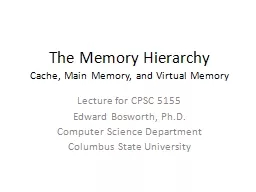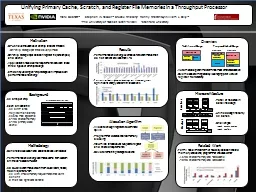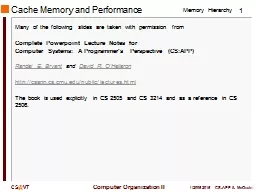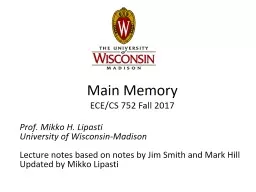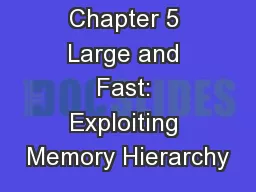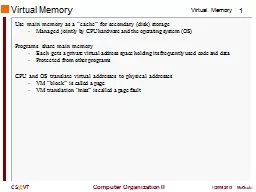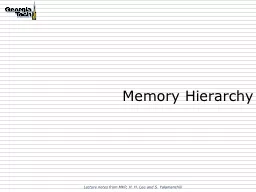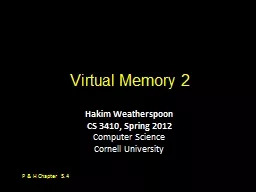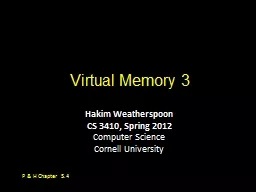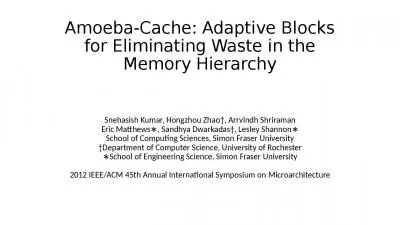PPT-The Memory Hierarchy Cache, Main Memory, and Virtual Memory
Author : pasty-toler | Published Date : 2018-11-04
Lecture for CPSC 5155 Edward Bosworth PhD Computer Science Department Columbus State University The Simple View of Memory The simplest view of memory is that presented
Presentation Embed Code
Download Presentation
Download Presentation The PPT/PDF document "The Memory Hierarchy Cache, Main Memory,..." is the property of its rightful owner. Permission is granted to download and print the materials on this website for personal, non-commercial use only, and to display it on your personal computer provided you do not modify the materials and that you retain all copyright notices contained in the materials. By downloading content from our website, you accept the terms of this agreement.
The Memory Hierarchy Cache, Main Memory, and Virtual Memory: Transcript
Download Rules Of Document
"The Memory Hierarchy Cache, Main Memory, and Virtual Memory"The content belongs to its owner. You may download and print it for personal use, without modification, and keep all copyright notices. By downloading, you agree to these terms.
Related Documents

